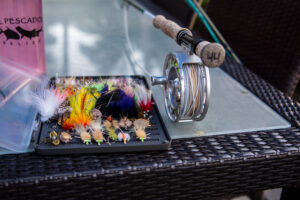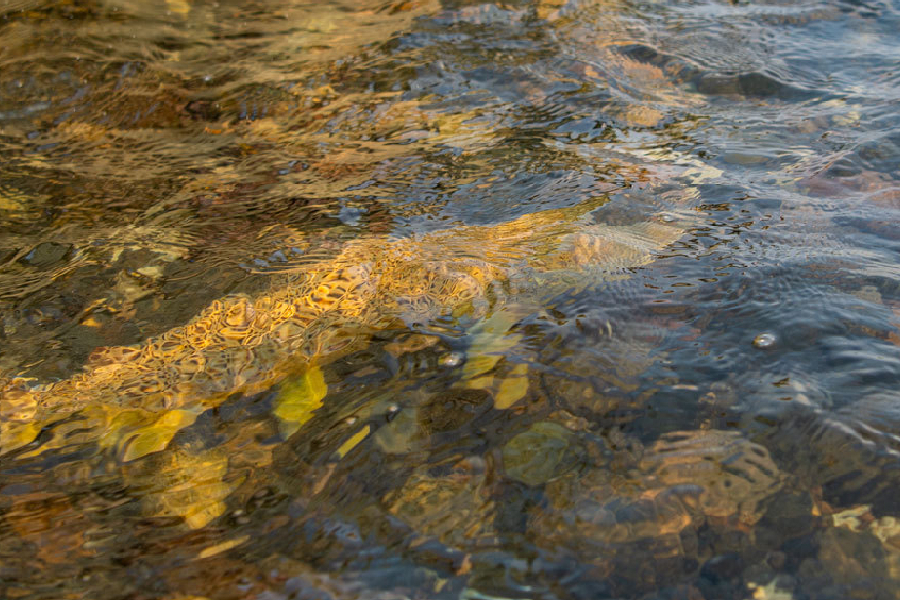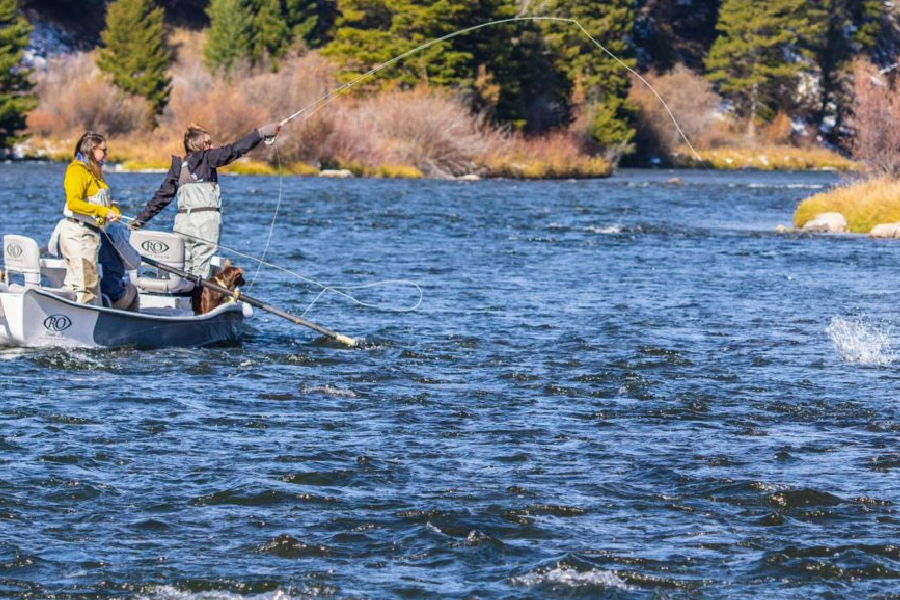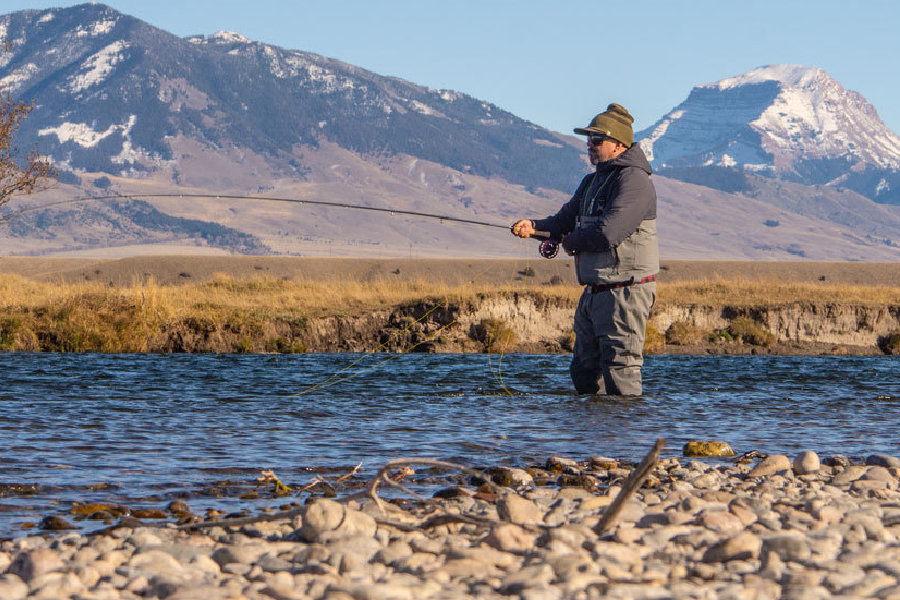When it comes to fly fishing, choosing the right leader material can significantly impact your fishing success. Among the top contenders are monofilament and fluorocarbon leaders. Both materials have their advantages and disadvantages, and understanding these can help you make an informed decision based on the conditions you’re fishing in, the species you’re targeting, and your personal preferences. Let’s take a deep dive into both of these popular leader types.
Monofilament Leader: The Classic Choice
Monofilament (often referred to as “mono”) is a type of fishing line made from a single strand of material. It has been a staple in fly fishing for decades due to its reliability, ease of use, and versatility.

Pros of Monofilament Leader:
- Stretchability: Monofilament is known for its stretch, which can be advantageous when fighting fish. The elasticity helps absorb the shock when a fish makes a sudden run or leap, preventing the leader from snapping under pressure. This can be crucial when targeting larger fish.
- Easier to Handle: Monofilament is generally easier to manage, especially for beginners. It handles knots better and is more forgiving in terms of storage, since it’s less likely to develop memory coils (kinks in the line).
- Cost: Monofilament tends to be more affordable than fluorocarbon, which can be a deciding factor if you’re fishing on a budget or if you go through a lot of leaders.
Cons of Monofilament Leader:
- Water Absorption: Monofilament tends to absorb water, which can cause it to weaken over time, especially in saltwater environments. This can lead to a decrease in the strength of the leader and a shorter lifespan.
- Visibility in the Water: While mono’s visibility can sometimes be an advantage for anglers, it’s usually a disadvantage when fishing for species that are highly sensitive to leader visibility. Fish in crystal-clear water may notice the line and become wary.
- Less Abrasion Resistance: Monofilament is generally less resistant to abrasion than fluorocarbon, meaning it can fray or break more easily when rubbing against rocks, sharp underwater features, or a fish’s rough mouth.
Fluorocarbon Leader: The Stealthy Specialist
Fluorocarbon leader material is made from polyvinylidene fluoride (PVDF), which has a unique set of characteristics that make it ideal for specific fishing situations.

Pros of Fluorocarbon Leader:
- Low Visibility: One of the key selling points of fluorocarbon is its low visibility in water. Fluorocarbon’s refractive index is very similar to water, meaning it’s far less likely to be detected by fish, even in clear, shallow waters. This can be a game-changer when fishing in heavily pressured areas or targeting more cautious fish species.
- Abrasion Resistance: Fluorocarbon is known for its superior abrasion resistance. It can withstand rough environments, making it ideal for fishing in areas with sharp rocks, oyster beds, or species that have abrasive mouths. For anglers targeting aggressive fish like pike or bass, fluorocarbon is a durable and reliable option.
- Density and Sink Rate: Fluorocarbon is denser than monofilament, which means it sinks faster. This makes it the preferred choice for nymph fishing, deep-water fishing, or when you’re trying to get your fly down quickly in current. It also helps with better fly presentation, especially in situations where you need to get a fly deep into the water column.
- Durability: Fluorocarbon is less prone to absorbing water, making it more durable in both freshwater and saltwater. It maintains its strength and integrity longer than monofilament, making it more reliable in challenging conditions.
Cons of Fluorocarbon Leader:
- Stiffness: Fluorocarbon is stiffer than monofilament, which can make it more difficult to handle, especially when tying knots or casting delicate flies. It’s more prone to retaining memory, meaning it can develop coils or kinks when spooled incorrectly, potentially interfering with casting accuracy.
- Lack of Stretch: Fluorocarbon has much less stretch than monofilament, which means there’s less shock absorption when fighting fish. This can result in more tension on the leader, making it more susceptible to breakage, particularly with larger fish or heavy tackle.

- Price: Fluorocarbon is more expensive than monofilament, and while it offers superior performance in certain situations, the cost might not justify its use for every type of fishing. However, many anglers are willing to invest in it for the increased stealth and durability it offers.
When to Use Monofilament vs. Fluorocarbon Leader
Here’s a quick breakdown of when each type of leader might be your best choice:
- Monofilament:
- Best for general-purpose fishing, especially in conditions where stretch and shock absorption are important (e.g., freshwater trout or bass fishing).
- Great for beginners due to its ease of use and affordability.
- Ideal for fishing in low-visibility conditions (murky water, early mornings, or overcast days).
- Fluorocarbon:
- Perfect for clear water or when targeting species that are line-shy (e.g., trout, bonefish, or permit).
- Best for nymph fishing or any situation requiring fast sinking.
- Good in areas with sharp underwater structures that could damage your line.
- Suitable for challenging conditions where you need stealth and abrasion resistance.

In the battle between monofilament and fluorocarbon leaders, the right choice depends on the conditions you’re fishing in and the species you’re targeting. Monofilament remains a versatile, affordable option for many anglers, especially in situations where flexibility and stretch are crucial. On the other hand, fluorocarbon excels in clear water and harsh conditions, where its low visibility and abrasion resistance gives you an edge.
Ultimately, many seasoned fly fishermen carry both types of leaders in their gear, ready to swap based on the fishing conditions they face. Whether you’re casting a delicate dry fly or chasing trophy fish in tough environments, understanding the strengths and weaknesses of each leader will help you fish smarter and increase your chances of landing that perfect catch. At the end of the day the choice on what to use comes down to you.




